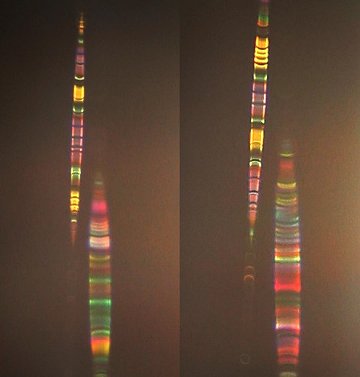 Where's Saturn? Is that a UFO--or the ISS? What's the name of that star? Get the answers from mySKY--a fun new astronomy helper from Meade. Where's Saturn? Is that a UFO--or the ISS? What's the name of that star? Get the answers from mySKY--a fun new astronomy helper from Meade. SPACECRAFT FLYBY: NASA's Deep Impact spacecraft, which blasted a hole in Comet Tempel 1 in 2005, is en route to another comet, Hartley 2, for a less violent examination in 2010. First, though, the spacecraft now known as EPOXI must fly by Earth for a gravity assist. Closest approach takes place on Dec. 31, 2007, and may be observed through backyard telescopes in Australia and southeast Asia: full story. APPROACHING COMET: Comet 8P/Tuttle is approaching Earth for a 25 million mile close encounter on New Year's Day. Until now, the comet has been a target for telescopes only, but "tonight I was able to see Comet 8P/Tuttle with the naked eye and averted vision," reports Doug Zubenel in rural Pottawatomie County, Kansas. A 2-minute exposure with his Canon Rebel XTi revealed Tuttle's lovely emerald color, shown above: 
The green hue is a sign of cyanogen (CN, a poisonous gas) and diatomic carbon (C2) in the comet's atmosphere; both substances glow green when exposed to sunlight in the near-vacuum of space. This green color could intensify in the week ahead as the comet nears and brightens to a predicted magnitude of 5.7. It's easy to photograph. Just point, click, and submit your image. Comet 8P/Tuttle Photo Gallery
[World Map of Comet Sightings]
[sky map] [comet cameras] [ephemeris] [orbit] SPIDER CHRISTMAS: On Christmas Eve in France even the spider webs were decorated. Near Paris, Denis Joye pointed his camera into a sunlit web and took this picture: 
Les Cowley explains the merry display: "Spiders make their colored Christmas decorations in many ways. Some are produced by tiny dew drops on the web. The ones Denis Joye photographed, however, are more subtle: regular bulges spun into the silken thread and internal coiled structures scatter and diffract sunlight." Coiled structures in a spider's web? "Inside some silks there are internal threads that coil and uncoil," says Cowley. "These act as tensioning springs and shock absorbers when an insect collides with the web. Internal structures like these could be sources of diffraction." "You can see similar effects from the rows of tiny dots on a CD but the spider wins on beauty!" | 
